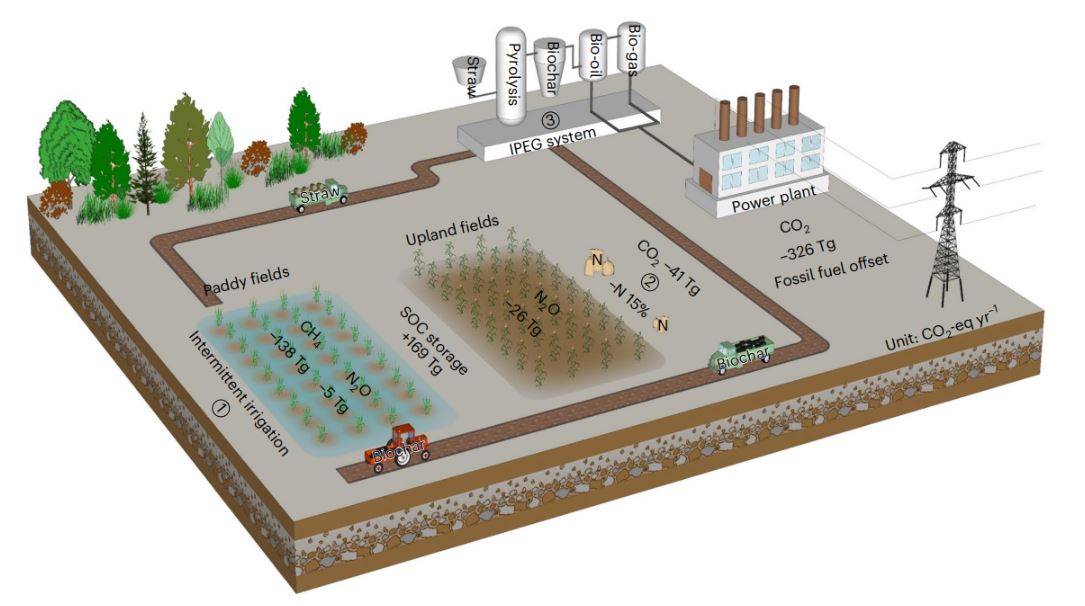February 9, 2023 | Nature Food | Source |
Introduction: The Paris Agreement spurred global efforts for net-zero emissions. China aims to peak emissions by 2030 and achieve carbon neutrality by 2060, posing challenges for agriculture. An international research team led by researchers from Chinese Academy of Science and University of Queensland in Australia investigates the integration of biochar production with methane and nitrogen reduction measures to achieve carbon-neutral staple crop production.
Key findings: In China, this integrated approach could turn staple crop production from emitting 666.5 to actually removing 37.9 million tons of CO2 equivalent annually. The key lies in biochar application to the soil, carbon sequestration, and displacing fossil fuels with bio-energy. This approach not only mitigates climate impact but also enhances crop yield, reduces nitrogen losses, and cuts air pollution, offering significant environmental and economic benefits. Implementing this system nationwide could advance China towards its 2060 carbon neutrality goal while bolstering food security and sustainability.
Figure | Overall effects of IPEG–CH4–N on mitigating GHG emissions from staple food production in China. Data are shown relative to BAU (see Fig. 2b for original data in the IPEG–CH4–N scenario).




